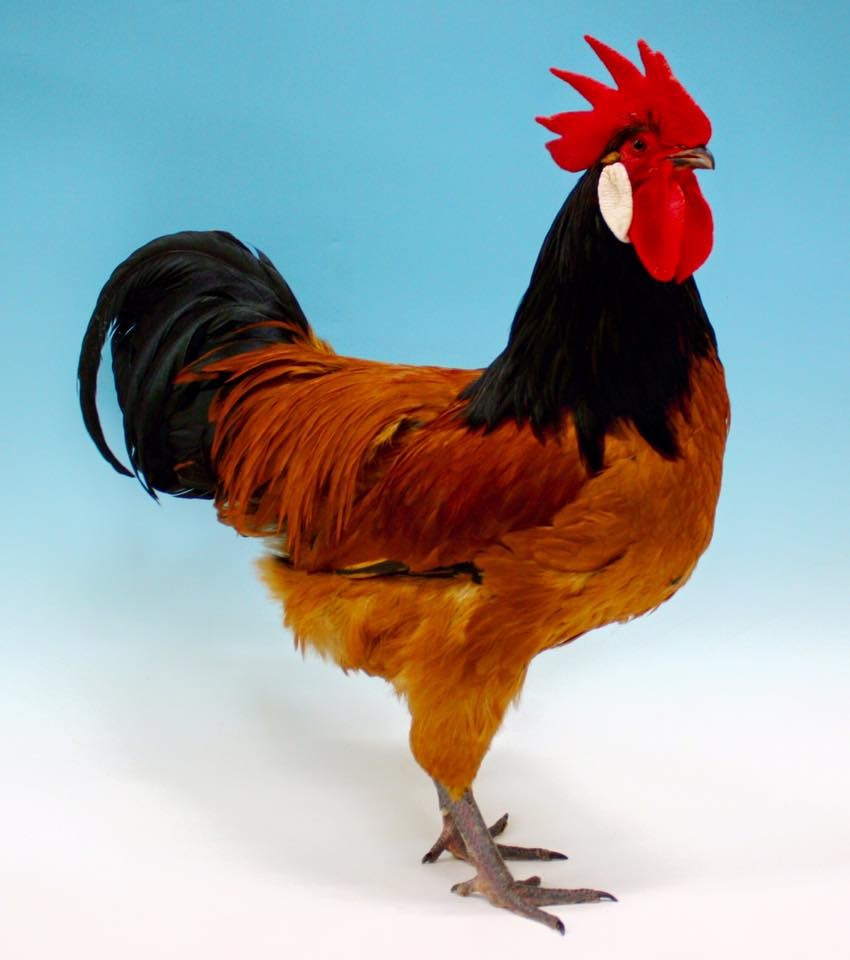Originated in Hamburg by Oskar Vorwerk in 1900, the breed was first shown at Hanover in 1912 and standardized in 1913. The aim was to provide a middle-weight economical utility fowl, good natured, lively but not timid. A point worthy of note is the compatibility of males amongst themselves. These fowls were found to be particularly suitable for smallholdings and farmyards as they are excellent foragers, small eaters and quick maturing.
General characteristics: male
Carriage: Very powerful, compact utility shape, carriage low rather than high, not too much bone, markings the same in both sexes, lively but not timid.
Type: Body of considerable size, as broad and deep as possible like a rounded rectangle. Back broad, slightly sloping with a full saddle. Breast broad, deep and well rounded. Wings closely carried. Tail moderately tight, held at a lowish angle with well-rounded sickles of moderate length.
Head: Medium sized and moderately broad. Face covered with small feathers. Comb single, of medium size at the most, with four to six serrations. Wattles of medium length, well rounded. Earlobes of barely average size. Eyes alert.
Neck: Of moderate length with full hackle and carried fairly upright, proudly.
Legs and feet: Moderate length with fine bone. Toes, four, small close fitting scales. Thighs fleshy and tightly feathered.
Plumage: Close fitting, glossy, velvety hackle.
Handling: Firm as befits an active forager.
Female
General characteristics are similar to those of the male allowing for the natural sexual differences. Back to be broad with almost no cushion. The latter part of the small comb may bend slightly to one side.
BANTAM
The same standard as in large fowl applies to bantams.
General characteristics: male
Carriage: Very powerful, compact utility shape, carriage low rather than high, not too much bone, markings the same in both sexes, lively but not timid.
Type: Body of considerable size, as broad and deep as possible like a rounded rectangle. Back broad, slightly sloping with a full saddle. Breast broad, deep and well rounded. Wings closely carried. Tail moderately tight, held at a lowish angle with well-rounded sickles of moderate length.
Head: Medium sized and moderately broad. Face covered with small feathers. Comb single, of medium size at the most, with four to six serrations. Wattles of medium length, well rounded. Earlobes of barely average size. Eyes alert.
Neck: Of moderate length with full hackle and carried fairly upright, proudly.
Legs and feet: Moderate length with fine bone. Toes, four, small close fitting scales. Thighs fleshy and tightly feathered.
Plumage: Close fitting, glossy, velvety hackle.
Handling: Firm as befits an active forager.
Female
General characteristics are similar to those of the male allowing for the natural sexual differences. Back to be broad with almost no cushion. The latter part of the small comb may bend slightly to one side.
BANTAM
The same standard as in large fowl applies to bantams.
Please contact the breed registrar for more information - [email protected]


